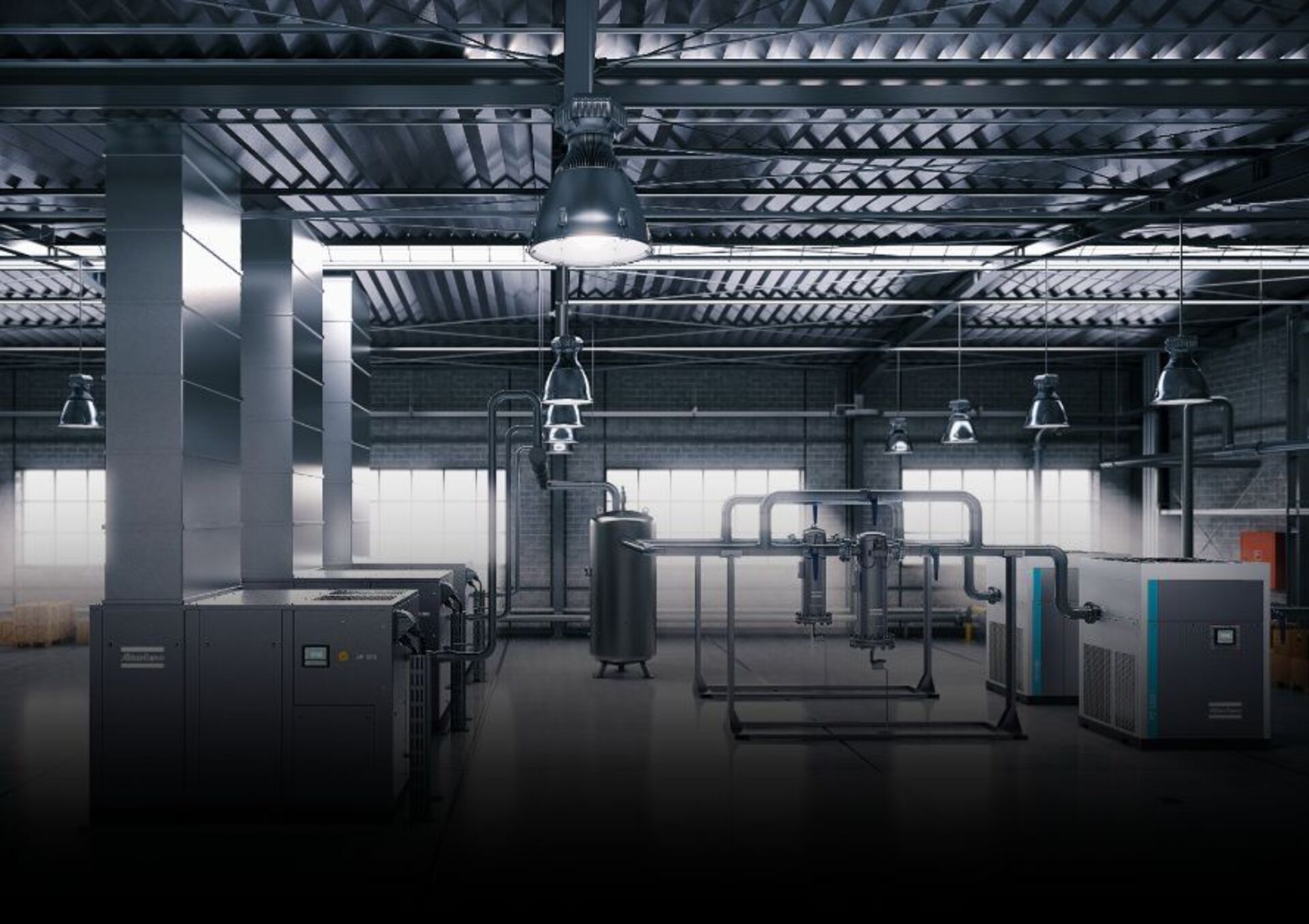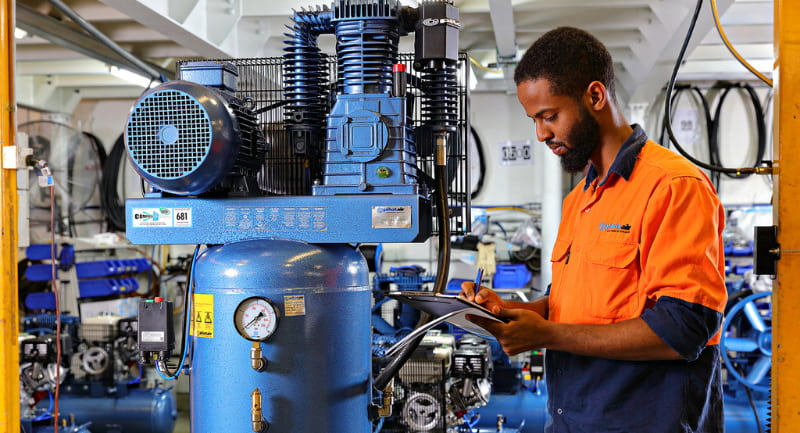
No Time to Read?
Let’s Explore the Blog Together to Know What’s Inside in 5 min summary video
Recapping Part 1 which introduced air compressors that are used in various types of industries to provide compressed and pressurized air for many applications. It is used today as the backbone of industries and crafts, and even the simplest and most complex works. Daily, hundreds of cars pass by gas stations to adjust the tire pressure, which is one of the pillars of driving safety.
The production lines are almost not devoid of compressed air lines to close / open the valves, vehicle, carpentry and blacksmithing workshops, you may find more than one air compressor with various capacities.
Compressors are divided into three groups:
Small
Delivers up to 40 litres per second of free air
Power input of no more than 15 kw.
Mobile or fixed and supplied as packaged units
Medium
Delivers from 40 to 300 litres per second of free air
Power input of between 15 and 100 kw
Supplied as packaged units
Large
Delivers more than 300 litres per second of free air
Power input of more than 100 kw
Supplied as packaged units
Read first ``Safety Tips to Operate Air Compressors Pt.1``
Advanced compressed air items control measures / precuations
1) Air Receivers
Air vessels or tanks are used to store compressed air before it enters into the piping system or equipment. Simply it acts as a buffer mechanism between compressor and end point where compressed air demandeds. Without it loading and unloading cycles can increase on compressor making the compressor work harder. Explosion is the main hazard if safe working pressure has been exceeded or because its failure to withstand pressure through corrosion fatigue or internal coke fires
Control measures / precuations
1. Prevent exceeding safe working pressure by:
a) Properly designed and constructed to withstand the compressor’s maximum pressure safely
b) Fitting safety valve and a pressure-reducing valve
2. Safety valve must be suitable with working system and complying with standard
3. Safety valve must be capable of discharging more air than the system can supply
4. Install accurately calibrated air pressure gauge with a readily visible appropriate scale-reading
5. Technical details ( e.g safe working pressure ) should be clearly visible and marked on the vessel or a plate attached to it


6. Drain valve, safety valve, examination holes and manholes need to be accessible
7. It is required to fit fusible plug when using large compressor systems
8. It is recommended any welding works to the air receivers being done by manufacturer to ensure complying with the specification and approval of manufacturer
9. Must be cleaned and examined at regular intervals
10. Frequent examination contained in a written scheme
11. Examination drawn up or certified by competent person
2) Coolers
Mechanical heat exchangers used to remove air-flow heat and moisture to produce cool, dry air suitable for use in air-powered equipment in simpler terms “ lowers the temperature of the compressed air ”. Many aftercoolers are pressure vessels and the associated hazards are similar to those of air receivers so explosion is the main hazard if safe working pressure has been exceeded or because its failure to withstand pressure through corrosion fatigue or internal coke fires
Control measures / precuations
1. Good circulation of external air over the heat exchanger surface to ensure effective transfer of heat.
2. Adequate space available around these heat exchangers to allow effective cleaning of all surfaces.
3. Install automatic drain valve
4. Provide protection against freezing of the valve
5. Monitor and measure inlet and outlet temperatures of the compressed air and of the coolant
6. Cooling air inlets and outlets should not be obstructed by loose equipment
7. Ensure cooling circuit protected against corrosion
8. Provide coolant drain valve
Safety is as simple as ABC – Always Be Careful
– Safety Advisor
3) Air dryers
Special types of filter systems that are specifically designed to remove the water that is inherent in compressed air.
In addition to case when air dryer does not function properly untreated compressed air, which contains solid, liquid, and gaseous contaminants, poses a significant risk as it can damage your air system and end product, the associated hazards are similar to those of air receivers so explosion is the main hazard if safe working pressure has been exceeded.
Control measures / precuations
1. Prevent exceeding safe working pressure by:
a) Properly designed and constructed air dryers chambers ( pressure vessels) conform with standards and withstand the compressor’s maximum pressure safely,
b) Fitting safety valve and a pressure-reducing valve
2. Install non-return valves to dryer outlet to protect it from stored energy in the system
4) Main line systems
Main hazard is related to design:
1. Machine malfunction by air starvation because of inadequately sized and designed systems
2. Lack of isolation valves may expose maintenance staff to unnecessary risks
3. Poor choice of used materials ( e.g some grades of plastic pipework ) so designers are advised to consult manufacturers when selecting materials

Control measures / precuations
1. Keep air system engineering drawing ishowing details of pipe runs, intended direction of air flow, and the positions of valves, drains
2. Update drawings when modifications or additions are made to the system
3. Support pipe system and secure by brackets or other supports
4. Pipe runs should be identified by painting
5. Isolation valves should be provided
6. Provide indicating notice of the position and/or purpose of the valve
7. Proper, safe, convenient location:
a) Safely locate pipes routes and the position of valves and operating points specially to persons who will use and maintain the system
b) Not to obstruct access and representing hazards to persons
c) Should be routed away from any areas where it may be vulnerable to mechanical damage
d) Adequate and sufficient access ways to enable operation and maintainance without exposing anyone to unnecessary risk



